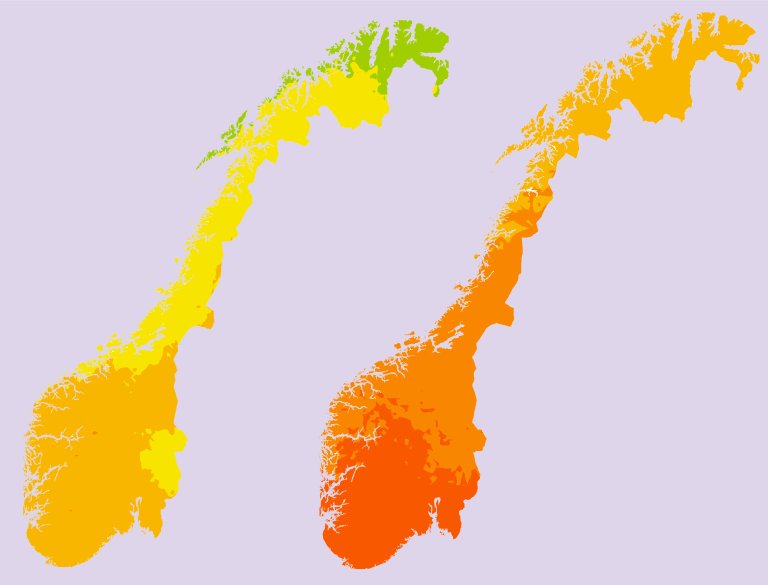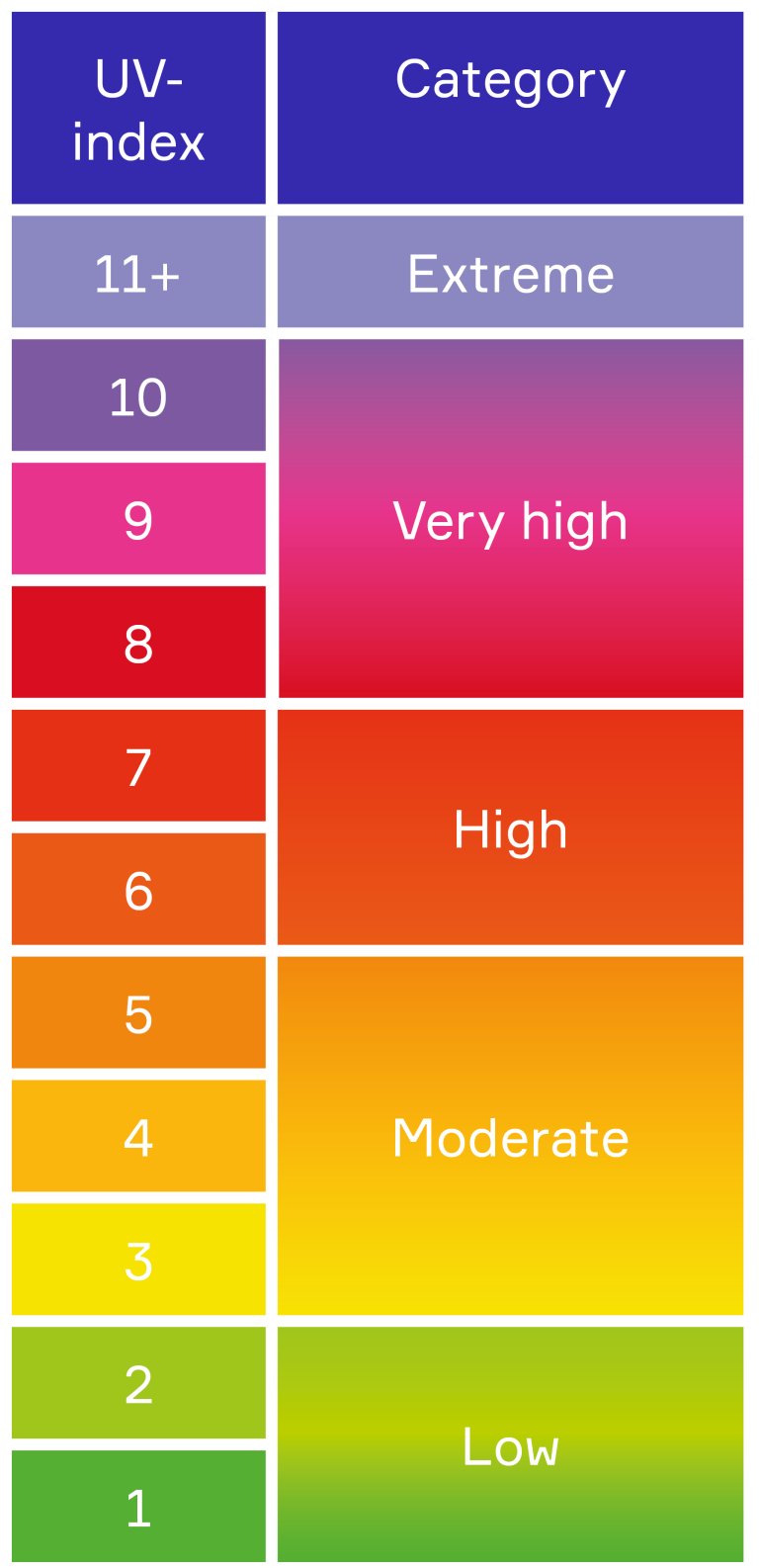IN SHORT
- The sun is most intense during spring and summer.
- UV index describes the level of solar UV radiation.
- “Today’s UV index” provides the maximum UV index for the day, for nine monitoring stations in Norway.
- UV forecast provides the expected UV index in Norway and abroad.
- The UV radiation from a sunbed is about as intense as from tropical sun.
What is UV radiation?
Ultraviolet (UV) radiation is electromagnetic radiation with shorter wavelengths than visible light. UV radiation is emitted from the sun, but we can receive UV radiation also from man-made sources such as sunbeds. UV radiation can be divided into UVA, UVB and UVC radiation, based on how energetic it is. The shorter the wavelength, the more energetic it is.
Read more about Sun, sunbeds and health risks.
When is the sun most intense?
- The sun is most intense during spring and summer.
- The sun is more intense the closer you get to the equator.
- The intensity of the sun is about twice as high in tropical areas as in southern Norway in the summer.
- The thinner the ozone layer, the more intense is the sun.
- Reflections from snow, light sand and sea enhances the intensity.
- Cloudy weather attenuates the radiation.
UV index describes the level of solar UV radiation
UV index describes the level of solar UV radiation. The higher the index, the more intense UV radiation and the more important it is to protect yourself from the sun. If the UV index is 3 or higher, you should protect yourself.


The Norwegian UV monitoring network
- Consists of nine measuring stations for monitoring ultraviolet (UV) radiation from the sun.
- The measurements are valuable input when assessing the health and environmental consequences of UV radiation.
- The Norwegian Meteorological Institute and the Norwegian Institute for Air Research (NILU) prepare UV forecasting on the basis of the data from the monitoring network.
- The Norwegian Radiation and Nuclear Safety Authority (DSA) administers the monitoring network, and the measurements are performed by DSA and NILU.
Today’s UV index provides the maximum UV index for the day, up to the time you enter the page, and for nine monitoring stations in Norway.
UV index today
- See how intense the sun is right now: Today’s UV index
- See how intense the sun is expected to be in Norway and abroad:
- Yr web: Expected UV radiation at your location (select location, then "Nearby" in the top menu)
- Yr app on your mobile phone/tablet: Expected UV radiation at your location (select location, then you will find the UV forecast under «Nearby» in the menu at the bottom line)
- NILU: UV forecast for Norway and holiday destinations abroad (In Norwegian)
- World Health Organization, WHO: SunSmart Global UV-app
UV radiation from sunbeds
A sunbed intended for cosmetic use, i.e. tanning purposes, emits UV radiation similar to what we get from the sun but more intense. Measurements of Norwegian sunbeds revealed that the mean UV radiation was more than twice as intense as the summer sun in Southern Norway, and there was a large variation in intensity between different sunbeds. The spectral distribution is also different between a sunbed and the sun. There is much more UVA and less UVB radiation from a sunbed compared to what we get from the sun.
More information
- StrålevernRapport 2015:7 UV-eksponering av den norske befolkningen (In Norwegian)
- Nordic statement – Outdoor environments for children
